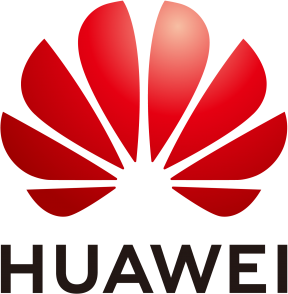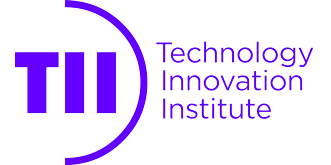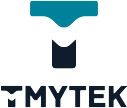List of Tutorials
TUT-01: 6G Waveform Options
TUT-02: Electromagnetic Signal and Information Theory: Beyond Diagonal Reconfigurable Intelligent and Holographic Surfaces
TUT-03: Security, Privacy and Anonymity in Emerging Applications in 6G and Beyond: A Physical Layer Perspective
TUT-04: Towards Future Ultra-Dense Low Earth Orbit Satellite Communication Systems: Accessing, Networking, and Routing
TUT-05: Recent Advances and Challenges in Vehicular Communication Network Security
TUT-06: Next Generation Multiple Access: Opportunities and Challenges
TUT-07: Near Field Terahertz Communications for 6G and Beyond: Challenges and Opportunities
TUT-08: Channel Measurement and Modeling for 6G
TUT-09: Integrated Sensing and Communications: Fundamental Limits, Signal Design, and Emerging PHY Technologies
TUT-10: Reconfigurable Holographic Surfaces: A New Paradigm to Ultra-Massive MIMO
TUT-11: 6G Technology Unifying the World in a Single Network
TUT-12: 6G Wireless Channels: Measurements, Characteristics Analysis, and Modeling Methodologies
TUT-13: Cell-Free Massive MIMO: Fundamentals and Energy-Aware C-RAN Implementation
TUT-14: Waste Factor, a Figure of Merit for Sustainability: Holistic Analysis of Energy and Throughput Tradeoffs in Radio Access
TUTORIAL SLIDES
Those registered for tutorials will receive a password to access the tutorial slides via email from our registrar. Please use this to log on the tutorial slides page. Please note we only post slides that have been provided to us from the tutorial speakers.
Click {here} to view log in.
TUT-01: 6G Waveform Options
(Sunday, 21 April, 09:00 GMT+4)
Room: Ballroom F, 4th Floor
ABSTRACT:
Today's wireless services and systems have come a long way since the rollout of the conventional voice-centric cellular systems. While 4G indicated that the evolution of cellular systems was directed more towards broadband connectivity than voice communications, 5G promised a paradigm shift with promising applications such as massive machine-type connectivity and ultra-reliable low-latency communication for variety of use cases including Industry 4.0 and Internet of things (IoT). This trend of increasing heterogeneity in terms of use cases and applications is bound to continue with the next-generation networks with even more stringent requirments related to cost, power efficiency, spectrum efficiency, extreme reliability, low latency, robustness against diverse channel conditions, cooperative networking capability and coexistence, dynamic and flexible utilization of wireless spectrum.
Given that wireless connectivity is becoming an imperative part of our existence, not just from the communication but also sensing perspective, it is important for the enabling technologies to keep up with the ever increasing requirements. Consequently, 6G envisions a network empowered with intelligent, aware, and flexible technologies that can scale with the various use cases, applications, and deployment scenarios. The emergence of software-defined networks allows the automatic configuration of devices and their parameters, systems, and services according to the user’s context. Some of the more-popular technologies in this regard include integrated sensing and communication, non-terrestrial networks, non-orthogonal techniques for increased efficiency, higher frequency bands (mmWave and THz), smart radio environments etc.
A fundamental part of any wireless communication standard is the PHY/MAC design. In this regard, the current OFDM technology has enjoyed unprecedented success with it being the only waveform being used for multiple generations of cellular systems (albeit with the introduction of multiple numerologies). However, given its limitations in terms of satisfying the new requirements, it is high time to look at potential alternatives for 6G PHY. Accordingly, in this presentation, we will identify the waveform design criteria for the upcoming 6G standards. The potential directions and research opportunities to address the challenges and requirements of the 6G vision will be discussed. Some of the discussions can be listed as below:
• Waveform for integrated sensing and communication
• mmWave and THz waveform design issues
• Multi-connectivity and synchronization
• NTN and waveform relations
• Secure waveforms
• Flexibility in waveform design
• Non-orthogonal waveforms
• Hybrid waveforms and multi-numerology
• OFDM, OTFS, OTSM, FMCW
SPEAKERS:
Prof. Dr. Huseyin Arslan, Istanbul Medipol University, Turkey
TUT-02: ELECTROMAGNETIC SIGNAL AND INFORMATION THEORY: BEYOND DIAGONAL RECONFIGURABLE INTELLIGENT SURFACES AND HOLOGRAPHIC SURFACES
(Sunday, 21 April, 09:00 GMT+4)
Room: Meeting Room 8, 4th Floor
ABSTRACT:
Electromagnetic Signal and Information Theory (ESIT) is an emerging interdisciplinary discipline that is concerned with the mathematical treatment and information processing of electromagnetic fields governing the transmission and processing of messages through communication systems. In this tutorial we discuss two new areas in the broad field of ESIT, namely beyond diagonal reconfigurable intelligent surfaces (BD-RIS) and holographic surfaces. This first part of the tutorial introduces the audience to BD-RIS, viewed as the next generation of RIS characterized by scattering matrix not constrained to be diagonal, and shows the benefits of BD RIS over conventional diagonal RIS. The second part of the tutorial discusses holographic surface being an electrically large antenna that is made of a virtually infinite number of radiating elements coupled with electronic circuits and a limited number of radio frequency chains.
SPEAKERS:
Bruno Clerckx, Imperial College London, United Kingdom
Marco Di Renzo, CentraleSupelec, France
TUT-03: SECURITY, PRIVACY AND ANONYMITY IN EMERGING APPLICATIONS IN 6G AND BEYOND: A PHYSICAL LAYER PERSPECTIVE
(Sunday, 21 April, 09:00 GMT+4)
Room: Meeting Room 9, 4th Floor
ABSTRACT:
The upcoming 6G network, not only an improvement of existing communication technology but also a great paradigm revolution, is envisioned as the new engine of many compelling applications, such as sensing/positioning, edge-cloud computing, e-Health, etc. Together with diverse quality-of-service (QoS) requirements, these applications also are expected to carry confidential private data during communications. Hence, it becomes much necessary to guarantee the endogenous security and privacy awareness of the emerging applications, while emphasizing the new service key performance indicators (KPI)s of sensing accuracy, energy/cost efficiency, anonymity, and so on. In this tutorial, we aim at introducing the novel solutions for jointly considering and optimizing those coupled or even competing performance metrics. This family of multi-KPI enabling techniques brings new insight on providing information security and privacy, with an eye on guaranteeing heterogeneous QoS tailed for new 6G applications.
Speakers:
Christos Masouros, University College London, United Kingdom
Zhongxiang Wei, Tongji University, China
TUT-04: Towards Future Ultra-Dense Low Earth Orbit Satellite Communication Systems: Accessing, Networking, and Routing
(Sunday, 21 April, 09:00 GMT+4)
Room: Meeting Room 3, 2nd Floor
ABSTRACT:
Ultra-dense Low Earth Orbit (LEO) satellites can provide users with flexible, seamless, and high-throughput communication services, which can complement the shortcomings of terrestrial communications and conventional Geosynchronous Earth Orbit (GEO) satellite-based communications. Besides the excellent communication performance, the low expense to produce and launch LEO satellites has inspired many Internet Service Providers (ISPs) to construct their own LEO satellite constellations. However, the qualified End-to-End (E2E) performance provision is challenged by the ultra density and high dynamics of LEO satellites as well as the uneven distribution of service requests which complicates the satellite accessing, networking, and routing. Worldwide researchers have been devoting significant efforts to optimize the performance. In this tutorial, we first introduce some basic knowledge on large-scale LEO satellite constellations, followed by which are the characteristics and management. The emerging techniques including Artificial Intelligence (AI) and digital twin are also discussed concerned with LEO satellite networks. We conduct a review of studies on LEO satellite accessing, networking, and routing. The principles to select the best LEO satellites for ground users to access the networks as well as the performance optimizations are introduced. For networking and routing of LEO satellites, we discuss how to establish the Radio Frequency (RF) or laser intersatellite links, and construct the E2E paths according to the link quality, network traffic load, and service requirements. Finally, the challenges and future directions are introduced.
Speakers:
Bomin Mao, Northwestern Polytechnical University, China
Jiajia Liu, Northwestern Polytechnical University, United States, and Xidian University, China
TUT-05: Recent Advances and Challenges in Vehicular Communication Network Security
(Sunday, 21 April, 09:00 GMT+4)
Room: Meeting Room 4, 2nd Floor
ABSTRACT:
Vehicular communication networks have been considered as a promising solution to achieve better traffic management and to improve the driving experience of drivers. However, vehicular networks are susceptible to various security attacks. Due to the wireless nature of vehicular communications, how to secure vehicular networks are great challenges that have hampered the implementation of vehicular network services. Many solutions have been proposed by researchers and industry in recent years. In this tutorial, we present a comprehensive overview on the state-of-the-art solutions concerning vehicular communication network security and privacy. For security, detailed discussions on cryptography-based schemes and trust-based schemes are provided. For privacy, we summarize and compare general solutions in preserving identity privacy and location privacy. Cellular based vehicular communications have shown many advantages over DSRC, and the oncoming fifth-generation cellular technology is going to provide more possibilities to communications. Thus, security architectures and solutions for cellular based communications are also illustrated and discussed. Finally, we summarize the remaining challenges and point out future research directions in this tutorial.
Speakers:
Yi Qian, University of Nebraska-Lincoln (UNL), United States
TUT-06: Next Generation Multiple Access: Opportunities and Challenges
(Sunday, 21 April, 09:00 GMT+4)
Room: Meeting Room 5, 4th Floor
ABSTRACT:
Due to the explosive growth in the number of wireless devices and diverse wireless services, such as virtual/augmented reality and Internet-of-Everything, next-generation wireless networks face unprecedented challenges caused by heterogeneous data traffic, massive connectivity, ultra-high bandwidth efficiency and ultra-low latency requirements. To address these challenges, advanced multiple access schemes are expected to be developed, namely next-generation multiple access (NGMA), which are capable of supporting massive numbers of users and network functions, e.g., communication, computation, and sensing, in a more resource- and complexity-efficient manner than existing multiple access schemes. Although the research on NGMA is in a very early stage, the trend of NGMA primarily aims to transition from orthogonality to non-orthogonality. This tutorial introduces the “One Basic Principle plus Four New” concept for designing NGMA, which begins with the basic principle by exploring possible multiple access techniques in a non-orthogonal manner. The tutorial then delves into the application of NGMA to meet the new requirements of 6G, particularly for massive connectivity in Internet-of-things networks. Next, it presents the interplay between NGMA and emerging new techniques, e.g., nearfield communications, integrated sensing and communications, THz networks, age of information, and simultaneously transmitting and reflecting surfaces. Furthermore, the tutorial discusses new applications of NGMA designs, e.g., semantic communications and mobile edge computing. Finally, it investigates the use of new tools, i.e., machine learning approaches, in NGMA networks, ushering in the era of machine learning-empowered NGMA for intelligent multiple access in 6G.
Speakers:
Zhiguo Ding, University of Manchester, United Kingdom
Yuanwei Liu, Queen Mary University of London, United Kingdom
TUT-07: Near Field Terahertz Communications for 6G and Beyond: Challenges and Opportunities
(Sunday, 21 April, 09:00 GMT+4)
Room: Meeting Room 6, 4th Floor
ABSTRACT:
Wireless communications in the sub-terahertz and terahertz (THz) bands are a key enabler of future sixthgeneration (6G) wireless networks. The abundant bandwidth in these bands offers enormous potential to alleviate spectrum scarcity and enhance the capacity of existing wireless communication systems. Additionally, THz applications include sensing, enabling applications in radar, localization, security, air quality monitoring, and climate change. Point-to-point THz links have been already experimentally demonstrated, however, making THz communication practical, especially in mobile scenarios, remains challenging. This is especially complicated in the THz band as mobile THz wireless systems (including WLANs) will often operate in the near-field due to the very large electrical size of the high-gain antennas required for making high-rate communication links feasible at such frequencies. This becomes even more relevant when we consider intelligent reflecting surfaces (IRSs), one of the breakthrough technologies for THz in 6G in which the aperture size can be scaled significantly without much challenge. Adapting THz research for efficient wireless systems requires re-evaluating propagation models, physical layer designs, and networking solutions inherited from 2G-5G wireless networks.
Recent years have seen progress in near-field-specific models, tools, and solutions for mobile THz communications. Accordingly, this tutorial aims to provide an updated look at the field of THz applications for 6G and beyond, while (i) filling knowledge gaps for a coherent understanding of near-field propagation; (ii) showcasing some solutions to the envisioned problems, and (iii) highlighting the emerging critical challenges. The tutorial starts with an overview of potential role of the near field in THz-band applications for 6G communication and sensing systems. The common mode of propagation, beamforming, is first comprehensively evaluated analogous to Gaussian beams, with an indepth explanation of the situations where it may still be used. Wavefront engineering principles are discussed, and three alternate beam types are presented:(i) beamfocusing; (ii) Bessel beams, and (iii) Airy beams. Lessons from both physics-based and data-driven channel modeling will be provided and utilized to introduce innovative engineering solutions for THz communication and sensing systems in the near field. The discussion will cover their application, the roadmap across various physical layer aspects (waveform design, blockages, capacity saturation), ultra-directional networking strategies (interference and coverage analysis, beam discovery and tracking, resource allocation and multiple access, multi-hop relaying), and integration of THz communications with other 6G enablers. Emphasis will be on understanding mathematical tools, simulation platforms, experimental testbeds, and data-sets available.
Overall, the tutorial will be beneficial for a wide audience with diverse backgrounds ranging from device, circuits, and antenna designers to channel and physical layer experts, to networking engineers, both in academia and industry.
SPEAKERS:
Josep Miquel Jornet, Northeastern University, United States
Vitaly Petrov, Northeastern University, United States
Arjun Singh, SUNY Polytechnic Institute, United States
TUT-08: Channel Measurement and Modeling for 6G
(Sunday, 21 April, 14:00 GMT+4)
Room: Ballroom F, 4th Floor
ABSTRACT:
Sixth generation (6G) communication has attracted substantial attention in the global research community of information and communication technologies (ICT). They are expected to support not only extended 5G usage scenarios, but also new ones such as integrated sensing/AI and communication and ubiquitous connectivity. To realize such demands, channel characteristics must be comprehensively studied and properly exploited, so as to promote the design, standardization and optimization of 6G systems. This tutorial will mainly introduce the recent progress in channel measurement and modeling for 6G, including channel measurements and modeling of multi-bands from centimeter to millimeter wave, Massive MIMO, Integrated Sensing and Communication, as well as intelligent channel modeling and channel prediction research. In addition, background and challenges, new channel sounding methodologies, and future research directions on channel measurement and modeling for 6G are introduced successively in detail. This tutorial provides an in-depth look at recent advances in channel measurement and modeling for 6G communications.
SPEAKERS:
Jianhua Zhang, Beijing University of Posts and Telecommunications, China
Pan Tang, Beijing University of Posts and Telecommunications, China
Yuxiang Zhang, Beijing University of Posts and Telecommunications, China
TUT-09: Integrated Sensing and Communications: Fundamental Limits, Signal Design, and Emerging PHY Technologies
(Sunday, 21 April, 14:00 GMT+4)
Room: Meeting Room 8, 4th Floor
ABSTRACT:
Jointly suggested by recent advances from the communications and signal processing communities, a common theme in many perspectives is that 6G RAN should become multifunctional. It should serve as edge infrastructure to provide site-specific services for surrounding users, rather than communication-only functionality. It is envisioned that radio sensing functionality can be integrated into 6G RAN in a lowcost and fast manner. Therefore, the future cellular network could image and measure the surrounding environment to enable advanced location-aware services. This type of research is typically referred to as Integrated Sensing and Communications (ISAC), which finds applications in numerous emerging areas, including vehicular networks, environmental monitoring, and human activity recognition. Recently, ISAC has garnered recognition from the International Telecommunication Union (ITU) as a pivotal element within the 6G landscape, serving as one of six key 6G usage scenarios.
In this half-day tutorial, we will firstly overview the background and application scenarios of ISAC. As a step further, we will introduce the state-of-the-art research progress on this topic, which consists of 3 technical parts: 1) Information-Theoretical Limits, 2) Signal Design for ISAC, and 3) ISAC with Emerging PHY Technologies. Finally, we will conclude the tutorial by summarizing the future directions and open problems in the area of ISAC.
SPEAKERS:
Fan Liu, Southern University of Science and Technology, China
Yifeng Xiong, Beijing Institute of Technology, China
George C. Alexandropoulos, University of Patras, Greece
TUT-10: Reconfigurable Holographic Surfaces: A New Paradigm to Ultra-Massive MIMO
(Sunday, 21 April, 14:00 GMT+4)
Room: Meeting Room 9, 4th Floor
ABSTRACT:
Ultra-massive MIMO for high-resolution sensing and high-capacity communications, has been considered as a promising enabling technique for the forthcoming sixth generation (6G) networks. Widely-utilized phased arrays relying on costly components make the implementation of ultra-massive MIMO in practice become prohibitive from both cost and power consumption perspectives. In contrast, the recent developed reconfigurable holographic surfaces (RHSs) composing of densely packing sub-wavelength metamaterial elements provide a new method to solve the above issue without costly hardware components. By leveraging the holographic principle, the RHS serves as an ultra-thin and lightweight surface antenna integrated with the transceiver, thereby providing a promising alternative to phased arrays for realizing ultra-massive MIMO. In this tutorial, we will first provide a basic introduction of RHSs. We then introduce the unique features of RHSs which enables both communication and sensing, in a comprehensive way. Related design, analysis, optimization, and signal processing techniques will be presented. Typical RHS-based applications for the wireless communications and radio-frequency sensing will be explored. Our implementation of RHSs as well as the developed prototypes of communication and sensing systems will also be reported. Several up-to-date challenges and potential research directions will be discussed as well.
SPEAKERS:
Boya Di, Peking University, China
Hongliang Zhang, Peking University, China
Lingyang Song, Peking University, China
TUT-11: 6G Technology Unifying the World in a Single Network
(Sunday, 21 April, 14:00 GMT+4)
Room: Meeting Room 3, 2nd Floor
ABSTRACT:
As the deployment of fifth-generation (5G) networks continues to progress, ongoing research and exploration by industry experts are focused on uncovering potential use cases and the enabling technologies for the subsequent generation: 6G. The design of these networks aims to incorporate cutting-edge technologies, such as Artificial Intelligence (AI), digital twin, quantum networking, blockchains, and more. However, the integration of these technologies presents a challenge, as it introduces heightened network complexity, thereby creating new hurdles in managing network infrastructure and ensuring seamless operations. This tutorial aims to provide a comprehensive overview of enabling technologies and potential use cases for 6G networks, digging into the various elements comprising these networks, the integration of new services, and, critically, strategies for effective 6G network operations management. It covers diverse topics, including the architecture and components of 6G networks, network management and monitoring tools, and the challenges and opportunities associated with automating 6G services. The tutorial further explores the role of AI in 6G network management, encompassing the use of machine learning algorithms to optimize network performance and enhance security. Additionally, it offers insights into implementing advanced network management practices such as automation, orchestration, and self-organizing networks. Designed for academics, postgraduates, network operators, engineers, and managers seeking to stay at the forefront of managing the upcoming wireless networks, this tutorial aims to impart a solid understanding of key concepts, best practices, and challenges in 6G network management by its conclusion.
SPEAKERS:
Anwer Al-Dulaimi, Veltris, Canada
Octavia A. Dobre, Memorial University, Canada
TUT-12: 6G Wireless Channels: Measurements, Characteristics Analysis, and Modeling Methodologies
(Sunday, 21 April, 14:00 GMT+4)
Room: Meeting Room 4, 2nd Floor
ABSTRACT:
Channel measurements and realistic channel models with good accuracy-complexity-pervasiveness tradeoffs are essential for designing, evaluating, and optimizing wireless communication systems. The proposed tutorial aims to address recent advances and future challenges in channel measurement and modeling techniques for sixth generation (6G) wireless systems by providing a comprehensive and in-depth course for communication professionals/academics. Network architecture and key technologies for 6G that will enable global coverage, full spectra, and full applications will be discussed first. Channel measurements and non-predictive channel models are then reviewed for challenging 6G scenarios and frequency bands, focusing on millimeter wave, terahertz, and optical wireless communication channels under all spectra, satellite, unmanned aerial vehicle, and maritime communication channels under global coverage scenarios, and vehicle-to-vehicle, ultra-massive multiple-input multiple-output (MIMO), industrial Internet of things (IoT), reconfigurable intelligent surface (RIS), and integrated sensing and communication (ISAC) channels under full application scenarios. New beam domain channel models and artificial intelligence (AI)/machine learning (ML) based space-time-frequency predictive channel models will also be investigated. A non-predictive 6G pervasive channel model for all frequency bands and all scenarios will then be proposed, which is expected to serve as a baseline for future standardized 6G channel models. Finally, future research challenges and trends for 6G channel measurements and models will be discussed at the end of the tutorial.
SPEAKERS:
Prof. Cheng-Xiang Wang, Southeast University, China
Dr. Jie Huang, Southeast University, China
Dr. Chen Huang, Purple Mountain Laboratories and Southeast University, China
Prof. Harald Haas, University of Strathclyde, United Kingdom
TUT-13: Cell-Free Massive MIMO: Fundamentals and Energy-Aware C-RAN Implementation
(Sunday, 21 April, 14:00 GMT+4)
Room: Meeting Room 5, 4th Floor
ABSTRACT:
After five generations of cellular network technology, we are reaching the end of its evolution due to unavoidable intercell interference and geometric signal strength variations. Suppose all the antennas that serve the mobile terminals are distributed over the coverage area instead of co-located in arrays at a few elevated locations as in cellular networks. In such a post-cellular network, the mobile terminals are surrounded by antennas instead of having a few base stations surrounded by mobile terminals. If each terminal is served by coherent joint transmission and reception from all the neighboring access points, we have a “User-Centric Cell-Free Massive MIMO system”. Positioned as a promising feature for beyond-5G systems, usercentric cell-free massive MIMO not only boasts significantly enhanced spectral and energy efficiency but also offers a flexible and cost-efficient deployment paradigm.
In this tutorial, we will first go through the fundamentals and motivation behind Cell-Free Massive MIMO. We will then describe the basic models and algorithms for channel estimation and data transmission in the uplink and downlink. The second part of the tutorial covers practical implementation aspects within the centralized cloud radio access network (C-RAN) architecture, providing an end-to-end network and virtualization perspective. The discussion spans fronthaul transport technologies, end-toend virtualization, and considerations regarding cloud resource sharing. The integrated design of the radio, fronthaul, and cloud processing resources is outlined and the operation is optimized from an energy-saving perspective. The tutorial concludes with a discussion of the primary challenges that remain open in this evolving field.
SPEAKERS:
Emil Bjornson, KTH Royal Institute of Technology, Sweden
Ozlem Tugfe Demir, TOBB University of Economics and Technology, Turkey
TUT-14: Waste Factor, a Figure of Merit for Sustainability: Holistic Analysis of Energy and Throughput Trade-offs in Radio Access Networks
(Sunday, 21 April, 14:00 GMT+4)
Room: Meeting Room 6, 4th Floor
ABSTRACT:
As the telecommunications industry continues to roll out 5G and begins to shift towards 6G technology, a significant challenge is emerging: the substantial increase in power consumption. This situation highlights the urgent need for more energy-efficient technologies. Currently, although various metrics are used to evaluate the energy efficiency of specific parts of a network, there is a clear need for a universal standard that can accurately assess the energy consumption of telecommunications systems. Although various metrics are available today to assess the energy efficiency of different network elements, the absence of a universal metric tailored for evaluating telecommunication systems is evident.
Drawing inspiration from Harold Friis's seminal work on Noise Factor in 1944, this tutorial introduces the Waste Factor as a novel metric designed for assessing power waste in telecommunication systems. To demonstrate that the Waste Factor is a universal metric, we apply it to various scenarios. These include 5G and 6G Radio Access Networks (RANs) and Data Centers. This approach highlights the use of Waste Factor to assess the energy efficiency of both individual network components and the overall system. In these scenarios, we present a detailed comparison between prevalent energy efficiency metrics and Waste Factor, highlighting its significance for both current and future network technologies. Importantly, our tutorial includes an in-depth analysis of RAN site architectures, wherein we assess the Waste Factor of key RAN components and configurations based on real measurements. Based on this analysis, we assess the influence of multiple deployment parameters and energy-saving methods on the energy-throughput trade-off in 5G and 6G networks. Finally, we highlight that the Waste Factor is key to providing both comprehensive theoretical analysis and support system design optimization, which will pave the way for greener and more sustainable communication systems.
SPEAKERS:
Theodore. S. Rappaport, New York University, United States
Nicola Piovesan, Huawei Technologies, France








